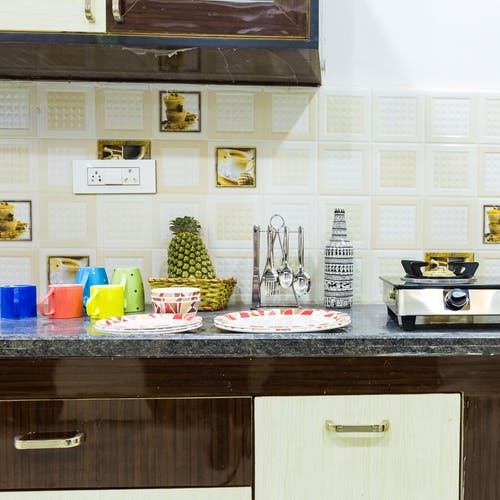Plates of Togetherness: Exploring the Food Culture in Co-Living Homes
The way that food is handled in co-living spaces might differ depending on the particular setup, style of management, and tastes of the residents. In co-living environments, food is typically handled in the following ways:
Common Kitchens: A lot of co-living apartments have common kitchens where tenants may cook for themselves. Schedules for cooking and individual food preferences can be accommodated with this arrangement.
Shared Meal Plans: Residents of certain co-living units participate in shared meal plans, which entail a pooled food budget. Grocery shopping is done with this money, and frequent meal preparation and sharing fosters a sense of community.
Catered Meals: Some co-living spaces like Studio Apartments for Rent in Hitech City may offer meal services or catering, particularly those that prioritize convenience. For those with hectic schedules or who would rather not cook frequently, this is a good alternative.
Food-Related Workshops and Activities: To improve residents’ culinary abilities and foster a sense of learning and shared experiences, co-living communities may provide workshops, cooking classes, or other food-related events.
The role of food in Coliving rooms for rent in Hitech City accommodations can vary depending on the specific setup and community preferences. However, there are several common aspects to consider:
Building Communities: Co-living tenants’ sense of community can be strengthened through shared meals. Sharing a meal together gives people a chance to connect, socialize, and get to know one another.
Convenience: It is easier for residents to cook and share meals in co-living facilities since they frequently have shared kitchens or communal eating areas. Those who do not have the time or want to prepare for themselves may find this to be really helpful.
Savings on costs: Co-living situations occasionally involve shared food costs, with participants contributing to a group food budget. Individuals may save money as a result since shared costs and bulk purchases may be more cost-effective.
Variation in Food Preferences: Co-living spaces can accommodate people with a variety of dietary needs, such as vegans, vegetarians, or people with particular food allergies. Offering a range of meal options can meet these different needs.
Community Events: To foster community among residents, food-related events like potluck dinners and themed meals might be planned. These gatherings add to the vibrant social environment in the co-living area.
Cooking and Meal Planning Together: There are co-living situations where meal preparation and cooking are done together. Residents can participate in collaborative food prep activities or take turns making meals for the group.
Well-being and Health: Providing wholesome meals can be a component of the emphasis on health and wellness that co-living spaces may place. Healthy food selections can support communal areas for wellness activities such as yoga, fitness, or other activities offered by some co-living lodgings.
Cultural Interactions: People from different ethnicities and origins are frequently drawn to co-living environments. By allowing inhabitants to sample and enjoy various cuisines, sharing meals promotes cross-cultural dialogue and understanding.
Adaptability: While some co-living locations include meals for the group, others might have a kitchen where residents can prepare their own food. This adaptability meets different lifestyles and tastes.
Sustainable Methods: Co-living spaces can use sustainable food practices in their meal service, like utilizing locally sourced food, cutting down on food waste, or promoting environmentally conscious dining among tenants.
In conclusion, food plays a more significant role in co-living spaces than just providing for basic needs. It enhances the entire experience and ambiance of the shared living space and is a useful tool for fostering community, convenience, cost savings, and cross-cultural interaction.
There are a number of things to take into account when assessing co-living spaces to make sure the area suits your needs and preferences. The following are important features to consider in co-living situations:
Location: close proximity to amenities, employment opportunities, public transportation, and leisure spaces. Think about the neighborhood’s accessibility and safety.
The atmosphere of the community: Evaluate the atmosphere of the community to see if it suits your tastes. While some co-living facilities prioritize social interaction, others could provide a calmer, more alone environment.
Amenities: Look for common amenities including lounges, coworking spaces, outdoor areas, fitness centers, and kitchens. Having access to well-kept amenities can improve your quality of life in general.
Personal space and privacy: Take into account the degree of privacy provided, particularly in common living spaces or bedrooms. While some co-living locations offer a combination of private and shared spaces, others offer private bedrooms.
Completed Spaces: Check to see if the lodging is completely supplied. This can facilitate the transition by sparing you the trouble of buying and shifting furnishings.
Technology and the Internet: Examine how dependable and high-quality the internet connection is. High-speed internet is a common feature of co-living environments. Make sure the IT infrastructure satisfies your requirements.
You can select a co-living space that fits your values, preferences, and way of life by carefully weighing these elements. Furthermore, taking part in virtual tours or paying a visit to the location in person can provide an up-close view of the surroundings and dynamics of the community.

